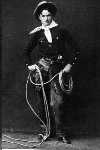 Rogers was an American humorist and actor. A cowboy in his youth, Rogers traveled the world before returning to the US to perform in vaudeville and Wild West shows as a rider and trick roper. The “cowboy philosopher’s” homespun wit and salty commentary on current political and social events soon earned him a following through movies, books, radio, and a syndicated newspaper column. A champion of airplane travel, Rogers made several long plane trips, but died in a crash with what famous aviator? Discuss
Rogers was an American humorist and actor. A cowboy in his youth, Rogers traveled the world before returning to the US to perform in vaudeville and Wild West shows as a rider and trick roper. The “cowboy philosopher’s” homespun wit and salty commentary on current political and social events soon earned him a following through movies, books, radio, and a syndicated newspaper column. A champion of airplane travel, Rogers made several long plane trips, but died in a crash with what famous aviator? Discuss
Source: The Free Dictionary
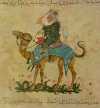 In 1325, Ibn Battuta embarked on an extraordinary 75,000-mile (120,675-km) journey via Mecca to Egypt, East Africa, India, and China. He set out at age 21 and returned home some 30 years later. No other medieval traveler is known to have journeyed so extensively. The details of his travels are recorded in a narrative titled The Adventures of Ibn Battuta. His inventions and academic work are also renowned. What nearly cost Ibn Battuta his life en route to China?
In 1325, Ibn Battuta embarked on an extraordinary 75,000-mile (120,675-km) journey via Mecca to Egypt, East Africa, India, and China. He set out at age 21 and returned home some 30 years later. No other medieval traveler is known to have journeyed so extensively. The details of his travels are recorded in a narrative titled The Adventures of Ibn Battuta. His inventions and academic work are also renowned. What nearly cost Ibn Battuta his life en route to China?  In 1571, a novel triangular gallows allowing for the hanging of several people at once was erected in the English village of Tyburn, which became so famous for its executions that thousands of paying spectators would turn out for hangings. During a 1649 mass execution, 24 prisoners were hanged there. The site became synonymous with capital punishment and was commonly invoked in euphemisms like “to take a ride to Tyburn,” meaning to go to one’s hanging. Who was “Lord of the Manor of Tyburn”?
In 1571, a novel triangular gallows allowing for the hanging of several people at once was erected in the English village of Tyburn, which became so famous for its executions that thousands of paying spectators would turn out for hangings. During a 1649 mass execution, 24 prisoners were hanged there. The site became synonymous with capital punishment and was commonly invoked in euphemisms like “to take a ride to Tyburn,” meaning to go to one’s hanging. Who was “Lord of the Manor of Tyburn”?  The only public holiday in the world dedicated to a horse race,
The only public holiday in the world dedicated to a horse race, 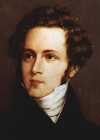 Bellini was an Italian composer who was born into a musical family and began composing in his childhood. He wrote his first opera at age 24 and went on to complete nine more before his death at age 33. His most celebrated works, which rely strongly on beautiful vocal melody and include the operas Norma and La Sonnambula—Italian for “The Sleepwalker”—greatly influenced the work of Giuseppe Verdi. According to legend, what musical feat could Bellini perform at just 18 months of age?
Bellini was an Italian composer who was born into a musical family and began composing in his childhood. He wrote his first opera at age 24 and went on to complete nine more before his death at age 33. His most celebrated works, which rely strongly on beautiful vocal melody and include the operas Norma and La Sonnambula—Italian for “The Sleepwalker”—greatly influenced the work of Giuseppe Verdi. According to legend, what musical feat could Bellini perform at just 18 months of age?  The Tootsie Roll chocolatey chew has a long history that begins in New York City in 1896. Leo Hirshfield invented the candy as a non-melting, economical alternative to traditional chocolates. Tootsie Rolls were so hardy, in fact, that they were added to soldiers’ rations during WWII. As of 2003, Tootsie Roll Industries, Inc. was producing 60 million Tootsie Rolls and 20 million Tootsie Pops, lollipops with a Tootsie Roll filling, every day. During what era did the Tootsie Pop gain popularity?
The Tootsie Roll chocolatey chew has a long history that begins in New York City in 1896. Leo Hirshfield invented the candy as a non-melting, economical alternative to traditional chocolates. Tootsie Rolls were so hardy, in fact, that they were added to soldiers’ rations during WWII. As of 2003, Tootsie Roll Industries, Inc. was producing 60 million Tootsie Rolls and 20 million Tootsie Pops, lollipops with a Tootsie Roll filling, every day. During what era did the Tootsie Pop gain popularity? 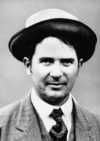 Cheerleading first appeared in the US in the late 1880s with crowds chanting to encourage school spirit. The first recorded instance of organized cheering took place at Princeton University in 1884. Later, a Princeton graduate introduced the idea at University of Minnesota football games. In 1898, Minnesota student Johnny Campbell directed a crowd in a cheer—marking the official birth of organized cheerleading. The first cheer squads were all male. When did women enter the world of cheerleading?
Cheerleading first appeared in the US in the late 1880s with crowds chanting to encourage school spirit. The first recorded instance of organized cheering took place at Princeton University in 1884. Later, a Princeton graduate introduced the idea at University of Minnesota football games. In 1898, Minnesota student Johnny Campbell directed a crowd in a cheer—marking the official birth of organized cheerleading. The first cheer squads were all male. When did women enter the world of cheerleading? 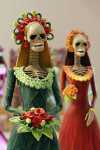 Día de los Muertos, or
Día de los Muertos, or